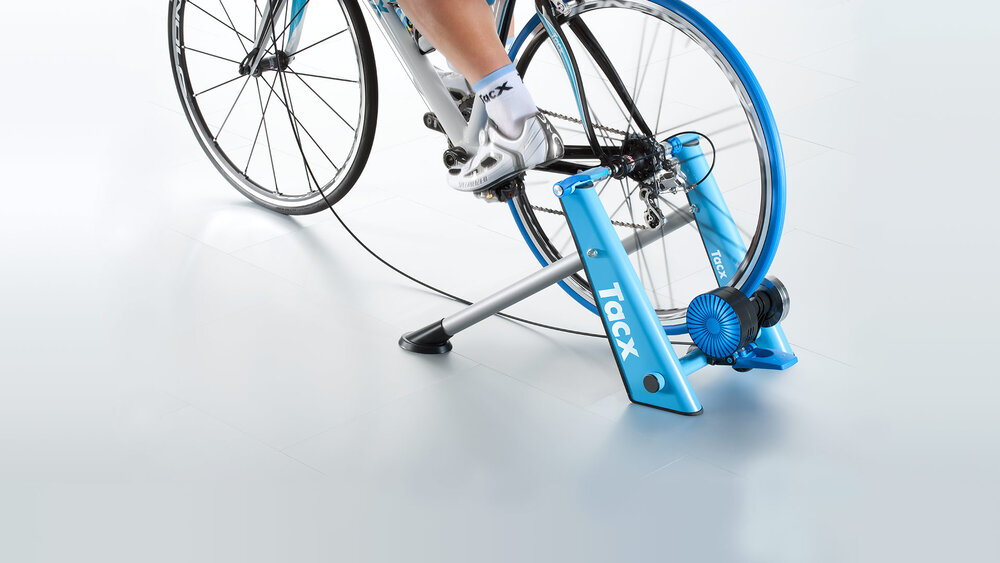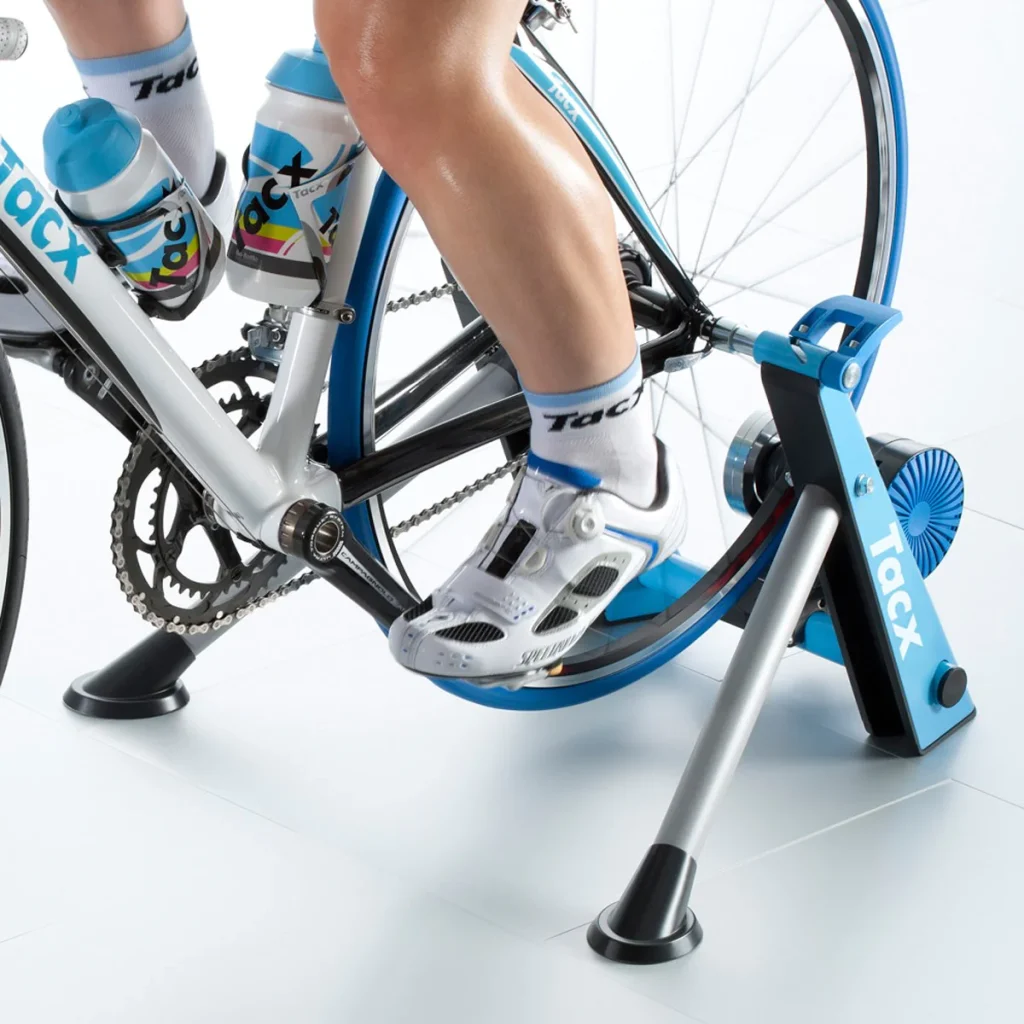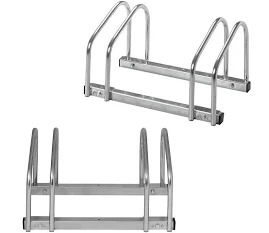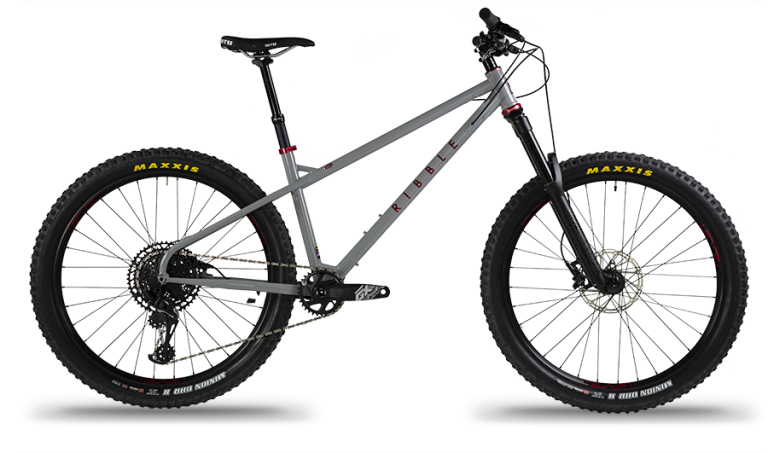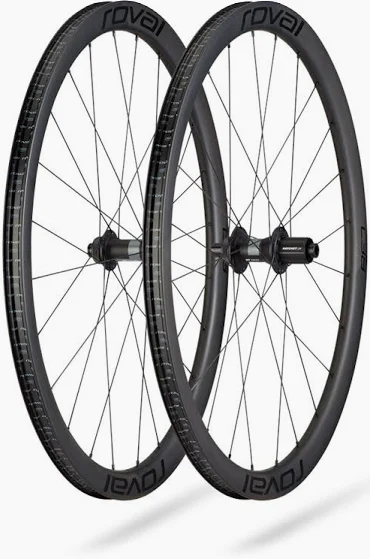Are you looking to enhance your cycling fitness? Look no further! In this article, we will share with you ten effective ways to improve your cycling stamina and endurance. Whether you’re a beginner or a seasoned cyclist, these tips will help you level up your performance on the bike. From incorporating interval training to maintaining a balanced diet, we’ve got you covered. Get ready to pedal your way to a fitter and stronger you!
Table of Contents
Toggle1. Proper Bike Fit
A. Importance of Bike Fit
Having a proper bike fit is crucial for any cyclist, whether you’re a beginner or a seasoned pro. A bike that is fitted to your body allows for optimal performance, comfort, and injury prevention. When your bike is properly fit, you can achieve a more efficient pedal stroke, reducing wasted energy and increasing power output. Additionally, a correct bike fit can help alleviate common issues such as knee pain, lower back pain, and numbness in the hands or feet. By investing in a proper bike fit, you can enhance your cycling experience and maximize your potential on the bike.
B. Steps to Achieve Proper Bike Fit
To achieve a proper bike fit, there are several key steps to follow. The first step is to ensure that the frame size of your bike is suitable for your body proportions. This can be determined by measuring your inseam and consulting a bike size chart. Next, it’s important to adjust the saddle height to achieve the ideal leg extension. This can be done by making small increments in saddle height until your leg is slightly bent at the bottom of the pedal stroke. Additionally, the saddle should be positioned fore and aft to align with your knee and foot alignment. Lastly, handlebar position and reach should be adjusted to ensure a comfortable riding position that allows for proper body alignment and control.
C. Professional Bike Fit Services
For those who want a more precise and personalized bike fit, professional bike fit services are available. These services are typically offered by experienced bike fitters who use advanced tools and techniques to analyze your body mechanics and optimize bike position. Professional bike fitting may involve motion capture systems, pressure mapping, and flexibility assessments. By investing in a professional bike fit, you can receive expert guidance and make fine-tuned adjustments to your bike setup, resulting in improved comfort, power, and overall cycling performance.
2. Regular Training Rides
A. The Benefits of Regular Training Rides
Regular training rides are the foundation of improving your cycling fitness. By consistently hitting the road or trail, you can develop cardiovascular endurance, increase muscular strength, and improve your overall bike handling skills. Training rides also provide an opportunity to challenge yourself, set goals, and track your progress. As you push yourself on training rides, you’ll be able to push your limits and expand your fitness level.
B. Setting Training Goals
Setting training goals can help keep you motivated and focused on your cycling journey. Whether you’re aiming to complete a long-distance event, achieve a certain average speed, or conquer a challenging climb, having specific goals gives you something to work towards. It’s important to set realistic goals that are challenging yet achievable. Consider breaking down your goals into short-term and long-term objectives to ensure steady progression. By consistently working towards your goals through regular training rides, you’ll be able to measure your improvement and stay motivated throughout your cycling journey.
C. Scheduling Training Rides
To make the most of your training rides, it’s essential to establish a consistent schedule. Plan your rides in advance and block off dedicated time on your calendar. This will help you prioritize your training and ensure that you have regular opportunities to get out on the bike. Consider incorporating a mix of different types of rides into your schedule, including endurance rides, interval workouts, hill training, and recovery rides. Remember to listen to your body and allow for rest days to prevent overtraining and promote proper recovery. By sticking to a schedule, you’ll be able to establish a routine and make steady progress towards your cycling fitness goals.
3. Interval Training
A. Understanding Interval Training
Interval training is a highly effective method for improving cycling fitness and increasing overall performance. It involves alternating periods of high-intensity effort with periods of active recovery. This type of training pushes your body to work harder and adapt to higher levels of intensity, resulting in improved cardiovascular fitness, increased lactate threshold, and enhanced muscular endurance. By incorporating interval training into your cycling routine, you can become a stronger and more efficient cyclist.
B. Different Types of Intervals
There are several types of intervals that you can incorporate into your training rides. One common type is the “tempo” interval, which involves riding at a sustained effort level just below your maximum sustainable pace. This helps improve your ability to ride at a challenging pace for an extended period of time. Another type is the “intervals above threshold,” where you alternate between high-intensity efforts above your lactate threshold and short recovery periods. These intervals help increase your lactate threshold and improve your ability to sustain high intensities for longer durations. Other interval variations include sprints, hill repeats, and pyramids. Each type of interval targets different energy systems and helps improve specific aspects of your cycling fitness.
C. Designing an Interval Training Plan
When designing an interval training plan, it’s important to consider your current fitness level, goals, and available time for training. Start by incorporating one or two interval sessions per week into your schedule, gradually increasing the intensity and duration as your fitness improves. Begin with shorter intervals and longer recovery periods, gradually progressing to longer intervals with shorter recovery intervals. Aim for a mix of different interval types to target different energy systems and keep your training varied. Consider working with a cycling coach or using online resources to help guide your interval training plan and ensure you’re optimizing your efforts on the bike.
4. Hill Training
A. Benefits of Hill Training
Hill training is a challenging yet rewarding way to improve your cycling fitness. Incorporating hill climbs into your training rides helps build strength, power, and endurance. Climbing hills forces you to work against gravity, engaging your leg muscles and cardiovascular system in a different way than flat terrain. By regularly including hill training in your cycling routine, you can increase your climbing ability, improve your overall power-to-weight ratio, and enhance your overall cycling performance.
B. Hill Training Techniques
When tackling hill training, there are several techniques you can employ to improve your climbing skills. Firstly, maintaining a consistent cadence and pedal stroke is crucial. Focus on spinning the pedals efficiently and evenly, avoiding excessive bouncing or mashing of gears. Secondly, practice pacing yourself on climbs by starting at a sustainable effort level and gradually increasing as you gain confidence and strength. Thirdly, choose a variety of hill gradients and lengths to challenge yourself and target different muscle groups. Additionally, incorporate hill repeats into your training, where you climb a specific hill multiple times with short recovery periods between efforts. By incorporating these techniques into your hill training, you’ll build strength and confidence to conquer even the toughest climbs.
C. Developing Climbing Strength
To specifically target climbing strength, consider incorporating specific strength-training exercises into your routine. Exercises such as squats, lunges, step-ups, and deadlifts can help strengthen the muscles used during climbing, including the quadriceps, glutes, and hamstrings. Additionally, core exercises such as planks and Russian twists can improve stability and balance, enhancing your climbing performance. Remember to start with lighter weights and gradually increase as your strength improves. Consult a certified strength and conditioning specialist or a cycling coach to develop a comprehensive strength-training plan that aligns with your cycling goals and addresses any specific weaknesses or imbalances.
5. Strength Training
A. Importance of Strength Training for Cyclists
Strength training is an essential component of improving cycling fitness and performance. While cycling primarily engages the lower body muscles, incorporating strength training can help ensure muscular balance, prevent injuries, and enhance power output. By strengthening your muscles, you can generate more force with each pedal stroke, resulting in increased speed and efficiency on the bike. Strength training also helps improve bone density, joint stability, and overall body composition. By including regular strength training sessions in your cycling routine, you can become a stronger and more resilient cyclist.
B. Recommended Strength Exercises
When it comes to strength exercises for cyclists, it’s important to focus on compound movements that target multiple muscle groups simultaneously. Squats, deadlifts, and lunges are excellent exercises that engage the lower body and core muscles used in cycling. Additionally, exercises such as calf raises, hamstring curls, and glute bridges can help strengthen specific muscle groups involved in cycling. Don’t forget to include upper body and core exercises as well to maintain overall body strength and stability. Push-ups, pull-ups, planks, and Russian twists are all beneficial for enhancing upper body and core strength. Aim for two to three strength training sessions per week, focusing on a mix of exercises that target different muscle groups.
C. Incorporating Strength Training Into Cycling Routine
To effectively incorporate strength training into your cycling routine, consider scheduling dedicated strength training sessions on non-consecutive days to allow for proper recovery. You can choose to perform strength exercises at the gym using free weights, machines, or resistance bands, or you can incorporate bodyweight exercises into your routine that can be done at home or while traveling. Additionally, consider supersets or circuit training for a time-efficient workout that combines strength exercises with cardiovascular intervals. Remember to start with lighter weights and gradually increase as your strength improves. Do not neglect proper form and technique, as this is crucial for preventing injuries. If you’re unsure about proper strength training techniques, consult a certified strength and conditioning specialist or work with a cycling coach to develop a personalized strength training plan that aligns with your specific cycling goals.
6. Endurance Training
A. Building Endurance for Long-Distance Cycling
Building endurance is essential for cyclists who aim to tackle long-distance rides or events. Endurance refers to the ability to withstand prolonged efforts and maintain a steady pace over a long period of time. By focusing on endurance training, you can improve your cardiovascular fitness, increase your energy efficiency, and delay the onset of fatigue. Whether you’re training for a century ride or simply want to improve your endurance capacity, incorporating specific workouts and strategies can help you reach your goals.
B. Long Slow Distance (LSD) Training
One effective method for building endurance is through Long Slow Distance (LSD) training. LSD rides involve cycling at a steady pace for an extended period of time, typically at a low-to-moderate intensity. These longer rides help improve your aerobic capacity, train your body to efficiently utilize fat as fuel, and enhance your overall endurance. Start with a duration that is challenging but manageable, gradually increasing the duration of your LSD rides over time. It’s important to maintain a conversational pace during these rides, as pushing too hard can lead to premature fatigue and hinder endurance development. Consider incorporating one or two LSD rides into your weekly training schedule, gradually building up to longer durations as your fitness improves.
C. Monitoring and Increasing Endurance
To monitor and increase your endurance, consider using a heart rate monitor or power meter during your training rides. These tools can help you track your effort levels and ensure that you’re training in the appropriate heart rate or power zones for endurance development. By gradually increasing the duration and intensity of your rides over time, you can continue to challenge your cardiovascular system and improve your endurance capacity. Remember to listen to your body and allow for proper recovery between training sessions to avoid overtraining and promote adaptation. A gradual and progressive approach to endurance training will yield long-lasting results and set you up for success in any long-distance cycling endeavor.
7. Cross-Training
A. Benefits of Cross-Training
Cross-training refers to engaging in different types of physical activities or sports outside of cycling. Incorporating cross-training into your routine offers numerous benefits for cyclists. Firstly, it helps prevent overuse injuries by allowing your cycling muscles to recover while engaging different muscle groups. Secondly, cross-training activities such as swimming, running, or weightlifting can help improve overall muscular strength and flexibility. Thirdly, cross-training can provide a mental break from the monotony of cycling, keeping your workouts enjoyable and varied. By diversifying your physical activities, you’ll become a well-rounded athlete and enhance your cycling performance.
B. Suitable Cross-Training Activities
When choosing cross-training activities, it’s important to select exercises or sports that complement your cycling fitness goals. Swimming is an excellent low-impact activity that can improve cardiovascular endurance and upper body strength. Running or jogging can help improve leg strength, bone density, and metabolic functioning. Weightlifting or resistance training can be beneficial for improving overall strength and muscle imbalances. Yoga or Pilates can enhance flexibility, stability, and core strength. Additionally, activities such as hiking, rowing, or even dancing can provide cardiovascular benefits and engage different muscle groups. Choose cross-training activities that align with your interests, schedule, and fitness goals to make the most of your training routine.
C. Integrating Cross-Training into Cycling Routine
Integrating cross-training into your cycling routine can be done by scheduling dedicated cross-training days or incorporating shorter cross-training sessions on rest days. Aim for two to three cross-training sessions per week, focusing on different activities or sports each time. It’s important to strike a balance between cross-training and cycling to ensure that one activity does not negatively impact the other. Consider working with a coach or fitness professional to develop a well-rounded training plan that incorporates cross-training effectively and aligns with your specific needs and goals as a cyclist.
8. Proper Nutrition and Hydration
A. The Role of Nutrition and Hydration in Cycling Performance
Proper nutrition and hydration play a critical role in optimizing cycling performance. It’s essential to fuel your body with the right nutrients and maintain adequate hydration levels to support energy production, reduce muscle fatigue, and enhance recovery. As a cyclist, your nutritional needs may differ from non-athletes due to increased energy expenditure and specific demands on your body. By paying attention to your diet and hydration strategy, you can enhance your cycling fitness and improve your overall performance on the bike.
B. Pre-ride Fueling Strategies
Before a ride, it’s important to fuel your body with the right combination of carbohydrates, protein, and fats to provide sustained energy and support optimal performance. Aim to consume a balanced meal or snack containing carbohydrates and protein about two to three hours before your ride. This will give your body enough time to digest and absorb the nutrients, ensuring that you have adequate energy stores for your ride. If you’re short on time, opt for a smaller, easily digestible snack that combines carbohydrates and protein, such as a banana with nut butter or a protein shake. Stay hydrated by sipping on water or a sports drink leading up to your ride. Experiment with different pre-ride fueling strategies to find what works best for your body and allows you to perform at your best.
C. Hydration Tips During Rides
Staying properly hydrated during your rides is crucial for maintaining performance and preventing dehydration. Aim to drink water or a sports drink every 15-20 minutes during your ride, especially in hot or humid conditions. Electrolyte replacement can also be beneficial, as sweating leads to loss of essential minerals. Choose a sports drink that contains carbohydrates and electrolytes to replenish both fluids and nutrients. It’s important to listen to your body’s thirst cues and drink according to your individual needs. Remember that hydration needs vary based on factors such as intensity, duration, weather conditions, and individual sweat rate. Experiment with different hydration strategies during training rides to find what works best for your body, and make adjustments accordingly.
9. Rest and Recovery
A. Understanding Rest and Recovery in Cycling
Rest and recovery are integral components of an effective cycling training plan. When you push your body through intense training rides, it undergoes stress and micro-tears in the muscles. Adequate rest and recovery allow for proper cellular repair, muscle growth, and adaptation. Without sufficient rest, you may experience decreased performance, increased risk of injury, and mental burnout. By prioritizing rest and recovery, you can optimize your cycling fitness and performance, allowing for continued improvement and enjoyment on the bike.
B. Importance of Rest Days
Rest days are essential for allowing your body to recover and rebuild after intense training sessions. On rest days, it’s important to give your muscles time to repair and replenish energy stores. This can involve complete rest or engaging in low-intensity activities such as gentle stretching, leisurely walks, or yoga. Rest days also provide an opportunity to focus on other aspects of self-care, such as sleep, nutrition, and mental relaxation. Embrace rest days as a crucial part of your training plan and trust that they are helping you become a stronger and more resilient cyclist.
C. Recovery Techniques and Strategies
In addition to rest days, incorporating specific recovery techniques can further enhance your body’s ability to recover and adapt. One effective method is Foam rolling or self-myofascial release, which helps alleviate muscle soreness, increase blood flow, and improve flexibility. Massage therapy can also aid in muscle recovery and reduce post-exercise soreness. Active recovery, such as light spinning or gentle stretching, can help flush out lactic acid and promote circulation. Adequate nutrition, including consuming a balanced meal or snack with carbohydrates and protein within the first 30 minutes after a ride, helps replenish energy stores and support muscle repair. Prioritize sleep, aiming for seven to nine hours of quality sleep each night, as this is when your body undergoes the majority of its repair and recovery processes. Lastly, managing stress levels through relaxation techniques or mindfulness practices can contribute to overall recovery and well-being. Experiment with different recovery techniques and strategies to find a combination that works best for your body and promotes optimal recovery between training sessions.
10. Mental Training
A. The Psychological Aspect of Cycling Fitness
Cycling fitness is not just about physical strength and endurance; the psychological aspect plays a crucial role in performance as well. Mental training involves developing mental strategies and resilience to help overcome challenges, maintain focus, and perform at your best. By honing your mental skills, you can enhance your cycling performance and reach new levels of achievement.
B. Mental Strategies for Peak Performance
There are several mental strategies that can be employed to optimize your performance on the bike. One is visualization, where you mentally review and imagine successful rides or performances, enhancing confidence and familiarity. Another is goal-setting, which involves setting clear and achievable goals to provide direction and motivation. Creating a positive mindset through self-talk and positive affirmations can also help overcome negative thoughts and doubts. Relaxation techniques, such as deep breathing or mindfulness, can help manage pre-ride nerves and enhance focus. Additionally, developing resilience and the ability to adapt to unexpected challenges can improve mental toughness on the bike. By incorporating these mental strategies into your training and competition routine, you can enhance your overall cycling fitness and achieve peak performance.
C. Overcoming Mental Barriers
Cycling often presents mental barriers such as fatigue, fear of failure, or self-doubt. Overcoming these barriers requires mental resilience and a proactive approach. Breaking down larger goals into smaller, manageable steps helps prevent overwhelm and build confidence. Focusing on the present moment and the process rather than the outcome can help shift the focus away from negative thoughts. Surrounding yourself with a supportive and like-minded cycling community can provide encouragement and motivation during challenging times. Lastly, embracing failure as an opportunity for growth and learning helps build resilience and a positive mindset. By continuously working on your mental skills and developing strategies, you can overcome mental barriers and unlock your full cycling potential.
In conclusion, improving cycling fitness involves multiple aspects that work together for overall progress. Proper bike fit ensures optimal performance and comfort, while regular training rides, interval training, hill training, strength training, endurance training, cross-training, and mental strategies enhance performance and prevent plateauing. Proper nutrition and hydration support energy production and recovery, and rest and recovery are vital for adaptation and injury prevention. With a comprehensive approach to cycling fitness, you can reach new levels of performance, overcome challenges, and enjoy the journey of becoming a stronger and more resilient cyclist.

